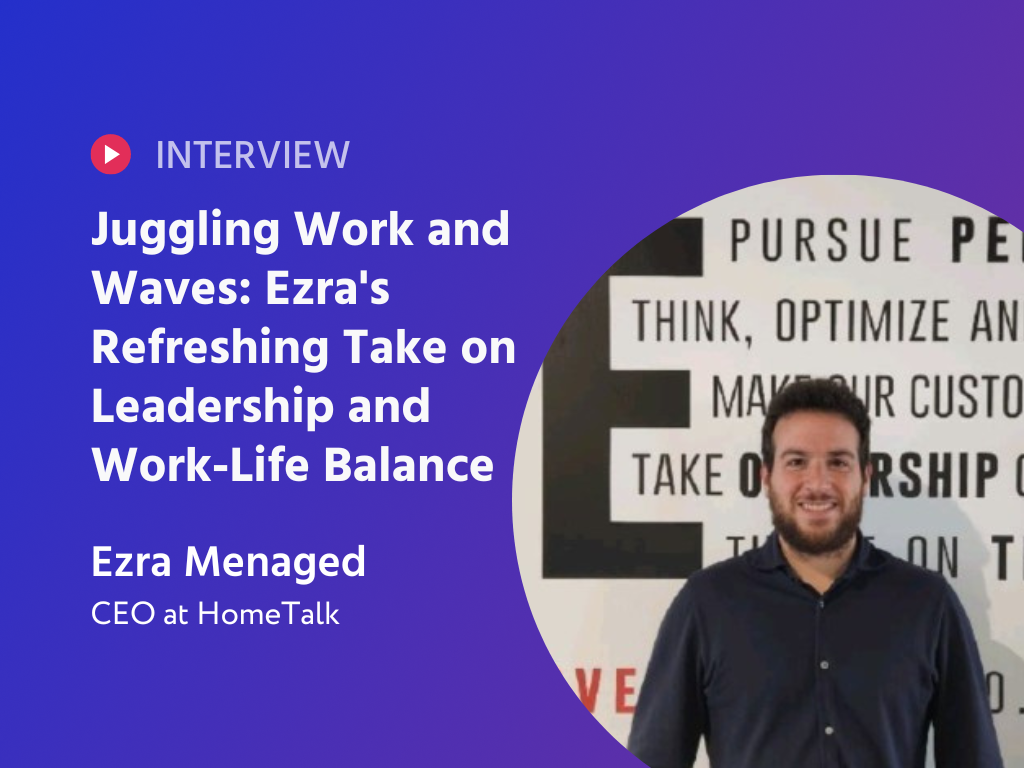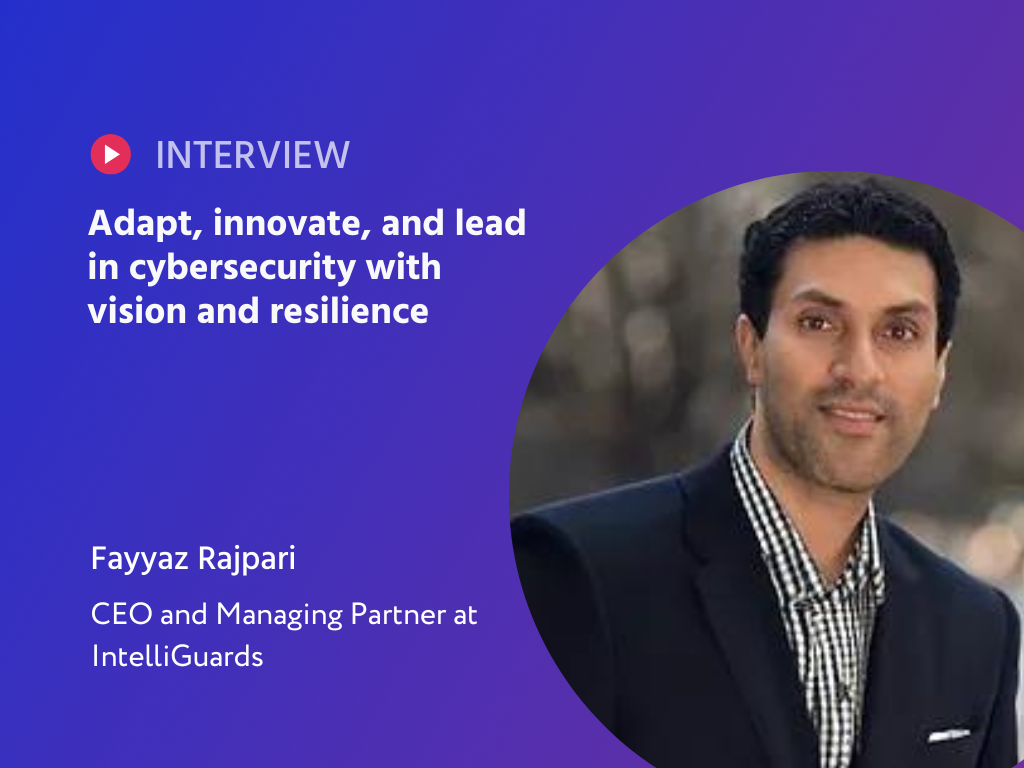In this insightful conversation, we had the pleasure of speaking with Roy Baharav, the Co-Founder and CEO of Hi Auto. Hi Auto, a company that launched in 2019, is redefining how voice AI technology serves the automotive and quick-service restaurant industries.
Through their innovative approach, they have successfully pivoted from automotive to revolutionizing the drive-thru experience. With over 100,000 drive-thrus in the U.S. alone, Hi Auto’s cutting-edge voice AI is improving efficiency and reducing the labor challenges that restaurants face, especially post-2020.
Roy shared his journey as a second-time entrepreneur and former Google product manager, revealing how Hi Auto’s technology is enhancing accuracy in customer orders—a crucial element in the fast-food industry. Combining voice AI with a human-in-the-loop system, Hi Auto is pushing the boundaries of automation while maintaining high service levels. Join us as we delve into the intricacies of voice AI, business strategy, and the future of quick-service restaurants in our exclusive interview with Roy Baharav.
Revolutionizing Drive-Thru Orders with Voice AI: Hi Auto’s Bold Move to Automate the Fast-Food Experience
When you think about voice AI, most people picture Siri or Alexa, but Roy Baharav and his team at Hi Auto have a different vision—one that’s reshaping the way drive-thru orders are taken. Hi Auto, founded in 2019, initially started with automotive voice AI but pivoted to focus on the quick-service restaurant (QSR) space by the end of 2020. The pandemic played a huge role in accelerating this shift, as restaurants struggled with staffing shortages while demand for drive-thru service surged. Hi Auto stepped in with a solution that didn’t just automate ordering but increased restaurant efficiency, cutting down on paper waste and boosting revenues for QSRs.
As Roy explains, the key to Hi Auto’s success lies in understanding the complexity of drive-thru conversations. “It’s not just about ordering; it’s about accuracy,” Roy says. In a typical drive-thru order, customers can list a dozen details in a single sentence—like “I’ll have combo number one, no pickles, extra mayo, no tomatoes, and lettuce.” It’s a lot to process, and getting even one detail wrong—like adding mayo instead of removing it—can make or break the customer experience. Unlike traditional voice recognition systems, Hi Auto’s AI is built to handle these multi-layered requests and ensure every detail is captured accurately, from the first word to the last.
It’s not just about ordering; it’s about accuracy
Hi Auto’s approach combines cutting-edge AI with a human-in-the-loop system to ensure accuracy when the technology’s confidence level is low. This hybrid solution keeps errors at bay, maintaining a level of service that’s in line with the best human employees. Over time, the system becomes even more efficient, reducing the need for human intervention while continually improving its accuracy. With more than 100,000 drive-thrus in the U.S., Hi Auto’s innovation is setting the stage for a smarter, more efficient future in the fast-food industry. As Roy puts it, “We knew we had to be more accurate than the average employee, and that’s exactly what we’ve built.”
Overcoming the Hurdles of Voice AI: Hi Auto's Journey to Smarter, More Efficient Drive-Thrus
When it comes to voice AI in drive-thrus, one might assume the technology works seamlessly across all accents, dialects, and backgrounds. But, as Roy Baharav points out, it’s not always as simple as that. “We had to deal with the challenge of understanding not just the words, but the intent behind them,” he says. The company’s models are pretty advanced and can generalize well across various accents, but the real battle lies in interpreting overlapping speech, background noise, and multiple voices. To make it work in a drive-thru environment, Hi Auto developed a system that could distinguish between the customer’s order and any extraneous chatter coming from the car. It’s not just about getting the words right—it’s about understanding the full context of the conversation.
We had to deal with the challenge of understanding not just the words, but the intent behind them
Roy also shares how unexpected challenges, like communication with restaurant employees, became key learning points. Early on, Hi Auto realized that their voice AI needed to be more flexible for restaurant staff who couldn’t always use a screen or text. In response, they introduced a hands-free option that allowed employees to use voice commands to communicate with the system. Whether it was updating inventory or letting the system know that the restaurant was closing for the day, this simple addition made a big difference. "We quickly realized that in order to succeed, we had to make sure both the system and the employees worked hand in hand," Roy explains.
Another area where Hi Auto faced growth was in the evaluation of success metrics. Initially, the company tracked how many orders were completed without human intervention, but they soon found that this wasn’t enough. They adapted by changing their success metrics to focus on the completion rate, including cases where an employee had to step in. This shift allowed Hi Auto to refine their approach, improving the completion rate from 80% to over 90%, which made a tangible impact on cost savings and efficiency. “At the end of the day, our goal was to make them successful,” Roy notes, and this mindset helped Hi Auto build a more resilient and collaborative solution for both customers and employees alike.
Meet Belinda: The Virtual Crew Member Transforming Restaurant Operations with Hi Auto
At Hi Auto, Roy Baharav and his team have found a unique way to make their voice AI system feel like part of the team—literally. In some of their most successful deployments, Hi Auto’s AI is given a name and even appears on the labor schedule, alongside human employees. Take Bucha and Gills, for example, where the virtual assistant is affectionately called "Belinda." Staff members view Belinda as one of their own, and the system is woven seamlessly into the daily operations. It’s not just about efficiency; it’s about creating a connection between technology and people, making employees feel comfortable with the system as a reliable “crew member” that they can trust.
But beyond the friendly name and persona, Hi Auto is making real strides in improving restaurant operations. Roy explains that the real return on investment for clients comes in three areas: labor efficiency, guest experience, and average check size. Hi Auto’s technology ensures consistency, especially during busy hours when restaurants can easily become overwhelmed by a sudden surge of customers. It can handle increased volume without breaking a sweat, lightening the load on staff while maintaining a smooth, consistent service. "With Hi Auto, even if you suddenly have 50 guests instead of the expected 15, the system can manage it without a hitch," Roy notes. This level of reliability is invaluable for restaurants trying to maintain quality while juggling fluctuating customer demands.
With Hi Auto, even if you suddenly have 50 guests instead of the expected 15, the system can manage it without a hitch
The impact on speed and customer satisfaction is equally impressive. Hi Auto’s AI doesn’t just replicate human interaction; it improves upon it by offering more upsells and recommendations, which can boost revenue while keeping the order speed on par with—or even faster than—human employees. Additionally, the ability to tailor scripts and customize pitches based on factors like time of day or holidays allows for a personalized customer experience that remains consistent across all locations. "It’s all about providing a great service across the board, even when things get hectic," says Roy. With Hi Auto, restaurants can rest easy knowing they have a reliable system that keeps things running smoothly, no matter what.
From Voice AI to Personalization: Roy Baharav Shares the Future of Hi Auto
Hi Auto is quickly becoming a game-changer in the drive-thru space, and according to Roy Baharav, one of the keys to their success is consistency. The company’s system is designed to improve labor efficiency, customer experience, and even increase average ticket sales by a small but significant percentage. "Even a 1-2% increase in average ticket size is huge in this industry," Roy explains. The real magic happens behind the scenes—Hi Auto’s system can help restaurants handle an unexpected rush or adjust operations when employees are out, all while maintaining the same level of service. It’s not just about speed; it’s about delivering a more consistent and smoother experience that both employees and customers can rely on.
Even a 1-2% increase in average ticket size is huge in this industry
When it comes to the customer experience, Roy and his team are exploring how voice plays a role in shaping interactions. While Hi Auto’s system can be customized to suit the needs of different brands, one intriguing element is the voice itself. Some customers prefer a more human-like voice, while others are comfortable with a digitized one. As Roy puts it, "Some brands want their customers to know they’re talking to AI, and for others, they want the AI to sound as human as possible." Personalization is key here, and Hi Auto is already working on unlocking the potential of voice as part of a broader strategy to tailor the experience to each customer. It's a step toward making voice AI more than just functional—it’s about creating a connection.
Looking ahead, Roy is focused on improving the guest and restaurant experience while staying laser-focused on the drive-thru space. "We're not looking to conquer the world right now—we're aiming to be the best at what we do," he shares. With over 700 live stores, Hi Auto is refining its technology, making it more intuitive and valuable for customers. But Roy’s advice to entrepreneurs goes beyond just technology: "The most important thing is to start with the right partner. It’s the foundation of everything," he says. In his eyes, having the right people by your side is just as crucial as having the right idea. And as for his future? He’s enjoying the ride, taking it one successful step at a time.




